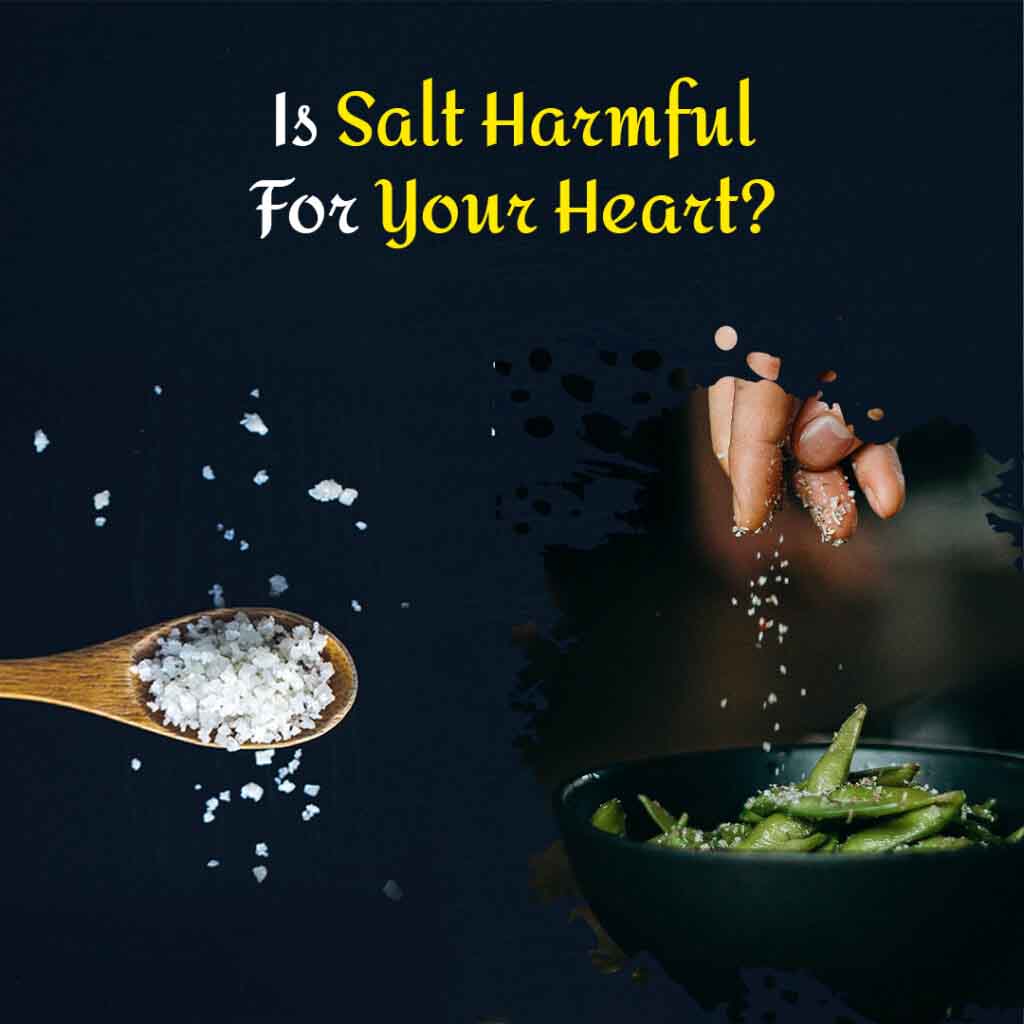Salt is a mainstay on almost every dinner table. Salt minerals supply critical electrolytes to the body, which help regulate muscle contractions, fluid balance, and nerve transmission. Your body only requires a modest quantity of salt every day, about 1-2 grammes.
Salt is made up of both sodium and chloride, but it’s the sodium that’s harmful to your health. The majority of people consume more salt than is suggested. Too much or too little salt can create health concerns, so finding the perfect balance is crucial.
 How does salt hurt my heart?
How does salt hurt my heart?
High blood pressure, a primary risk factor for heart disease, can be caused by overeating salt. Other health hazards linked to excessive salt consumption include:
- Kidney disease
- Oedema (fluid retention)
- stroke
How much salt should I have per day?
The Heart Foundation recommends a maximum daily amount of 5g of salt (2000mg sodium), about a teaspoon. Studies have shown that most people eat roughly 9g of salt a day, nearly double the recommended maximum.
It is important to remember that all types of salt, including pink Himalayan, rock salt, black salt, table salt and sea salt, contain the same amount of sodium. Sodium is the part of salt that can be damaging to health.
What foods are high in salt?
The majority of salt consumed comes from processed and packaged foods. Some of these items don’t even taste salty, which may surprise you.
- Biscuits, muffins, cakes, sauces, pizza, burgers, pasta and noodle dishes are among foods that contribute considerably to high sodium levels in your diet.
- Meat, poultry, and other processed meats
- Cereals and grains are used to make bread, breakfast meals, and other items.
Salt is present in fresh meals such as fruits and vegetables, although in minimal amounts.
How can I cut down on salt in my diet?
The following methods can be included in your everyday eating habits to help you reduce your salt intake.
Increase your vegetable consumption.
The easiest method to cut down on salt in your diet is to eat more fresh, unprocessed foods, especially vegetables and fruit. These foods are naturally low in sodium and can help you maintain good heart health.
Instead of salt, use herbs & spices:
Use a selection of wonderful herbs and spices to enhance the flavour of your dish while it’s cooking. On the dining table, these can also be used to replace your salt shaker.
Cook at home:
Takeout food and food purchased outside of the home are frequently heavy in salt. Preparing and cooking your food is a fantastic approach to cut down on salt since you can control how much salt is used and choose low-salt items.
Pay attention to the labels.
Because many packaged and processed goods include hidden salt, reading the label and determining how much salt is within it. Look at the “per 100g” column on the nutrition information panel to compare products and choose one with less sodium.
Tip: If you’re pressed for time, search for goods labelled as “low salt,” “salt decreased,” or “no added salt.”
Maintaining a healthy salt intake for life.
People who eat a high-salt diet typically develop a craving for it. Other flavours will emerge when you lessen the amount of salt you use in your dish. Remember that your taste receptors will adjust with time, and you won’t notice the lack of salt after a few months.

